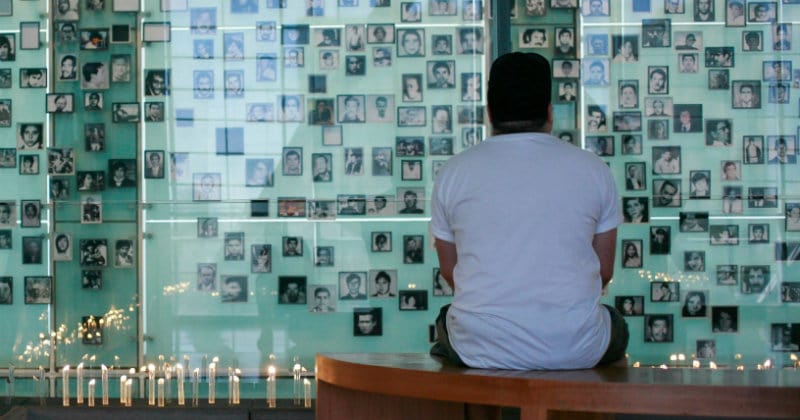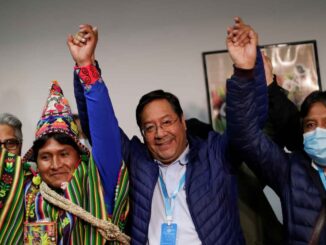
Isabel Cocker/The Santiago Times Staff
SANTIAGO – The sea of faces, sat on the cold ground, gazed up at lines of photographs, names, dates, occupations which flickered past in a never-ending parade. The harsh red light of the stage barely illuminated the plaza leaving all to sit in their own contemplation. Poetry by Raúl Zurita, set to music, filled the silence with images of love lost, of torture, of people left behind.
This was the 11th September remembrance ceremony at the Museo de la Memoria (Museum of Memory), a space for citizens to gather and pay their respects to all of those whose lives were destroyed as a result of the 1973 coup d’état and the ensuing dictatorship. It was a space for families to honor their dead, or still-missing, relatives, for people to contemplate the scale of the violation of human rights committed against the general population by their own government. A space to say that these people will never be forgotten, and that their deaths will never be meaningless, that never again will such horrors occur in Chile.
Nevertheless, this solemn ceremony seemed to be no more than a slight pause in a generally celebratory atmosphere. After all, it is September – the month of the Fiestas Patrias. In a week, the country will be celebrating their Independence Day with street parties, barbecues, and lots of music and dancing.

The four-day carnival finishes with the “Día de las Glorias del Ejército del Chile” (Day of the Glories of the Chilean Army), in which the armed forces of the country parade around the Parque O’Higgins in a display of their force and might. Not only is this a celebration, but it is also a day of remembrance, for the sacrifice of those who have given their lives serving Chile.
There is a striking scene in the newly-released documentary El Color del Camaleón (The Colour of the Chameleon), in which the son of a Chilean exile forced out from Santiago during the dictatorship returns to Chile during the month of September. After visiting the solemn ceremonies and commemorative marches of the 11th and then, a week later, the fondas of the Dieciocho holiday, he is surprised at the apposition of so much pain and so much celebration. He asks if it is not hypocritical to celebrate the armed forces when only a week earlier he was witness to so much grief caused by atrocities which those self-same military groups had carried out during the Pinochet regime.
However, the celebration of the armed forces has taken place for over 200 years and was officially added to the national calendar in 1915. It was originally established after the wars of Independence, when the country had to fight as armies for the first time. Was it not the ancestors of these current armed forces who gained independence from the Spanish? The colonizing nation itself could be seen as a dictatorial regime, one which did not represent the interest of many of its subjects, and one which violently controlled the people who disagreed with its values. In many ways, the first armies of the nation shared similar values to those who protested against the hegemony of the dictatorial regime.
We shouldn’t judge the entire 200-year history of an establishment based on its actions during a 20-year period. However, this doesn’t mean we should celebrate the Armed Forces wholeheartedly, and forget their actions during the dictatorship. In the same way, the quick removal of the 11th September events from the public conscience, to be replaced by the parties of the Dieciocho, does not mean that those values highlighted by the memorials also disappear. The juxtaposition of the two dates makes the need for memory even more jarring. A banner at the candlelit vigil at the Estadio Nacional says it all: A nation without a memory is a nation without a future.



